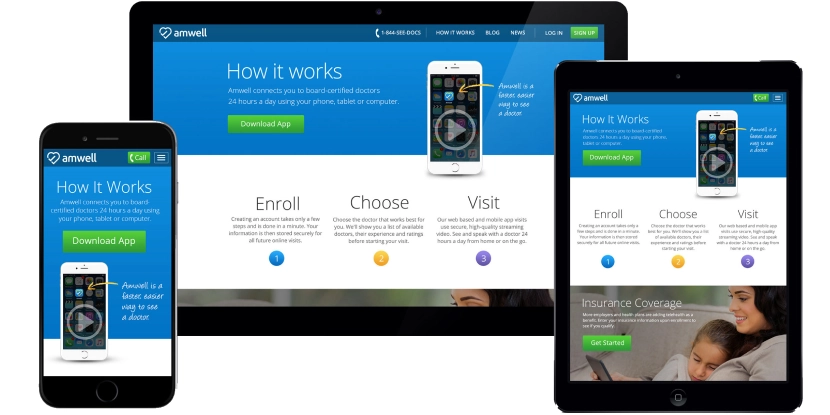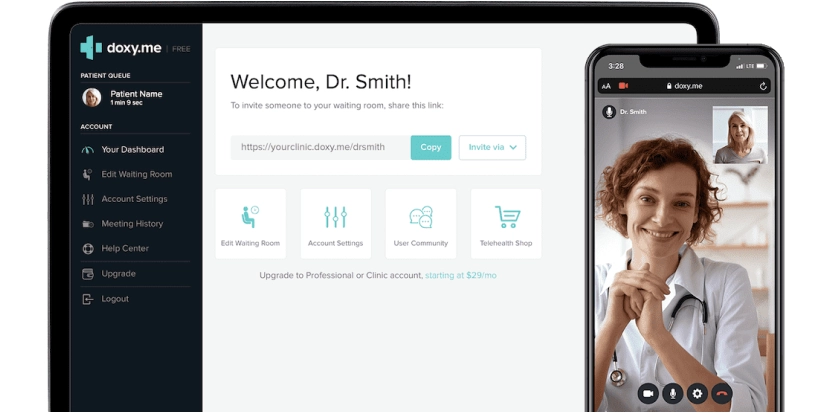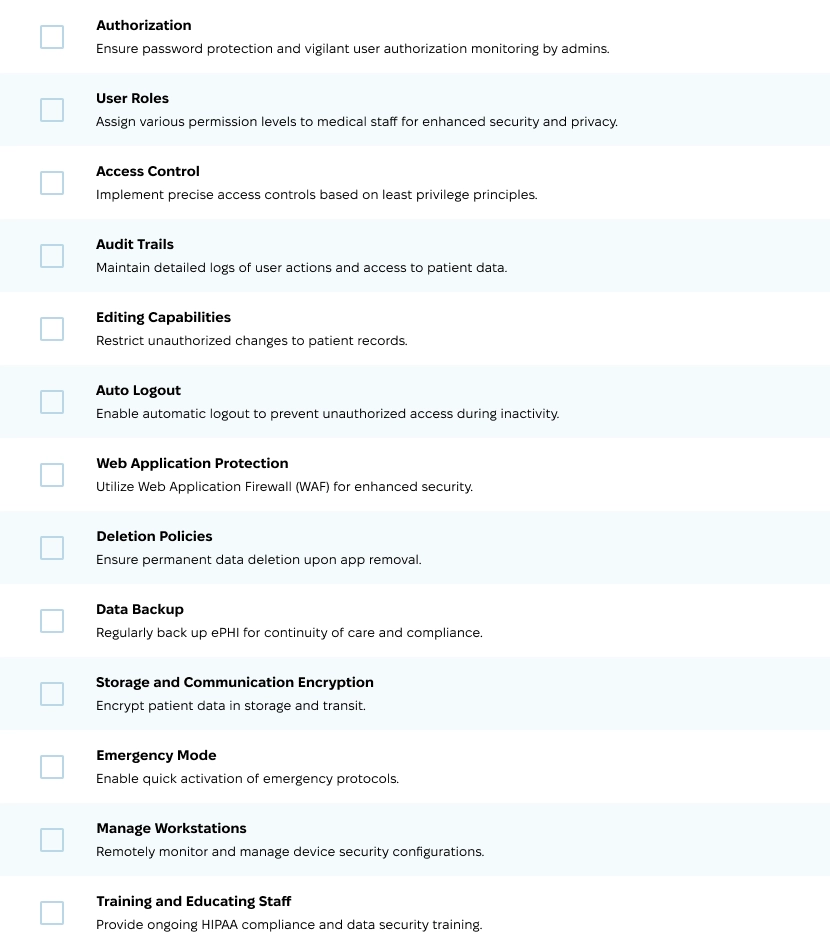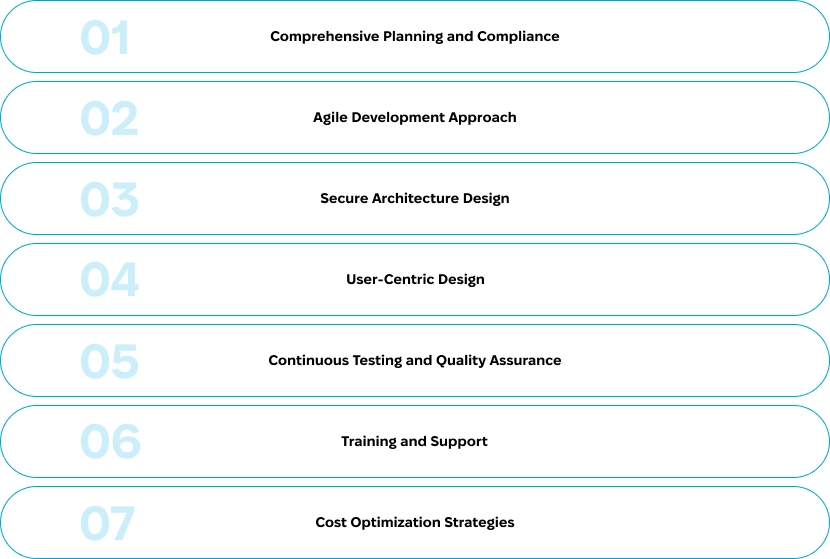Blog
When developing telehealth platforms, HIPAA compliance is non-negotiable if you want to avoid data breaches, non-compliance penalties, and reputational risks. As a health tech development company, we decided to explain the intricacies of this federal, covering its benefits, technical requirements, and development guidelines.
HIPAA-compliant telemedicine software
makes virtual care delivery more accessible, convenient, and safe. In contrast, the lack of
compliance with HIPAA standards poses hefty fines, legal liabilities, damage to reputation,
and compromised patient confidentiality.
HIPAA-compliant platform development ensures secure communication and data transmission. It
also safeguards patient privacy and meets regulatory requirements.
This article explains what HIPAA is, why it’s important, and how to develop a HIPAA-compliant
telehealth solution. Exoft is sharing insights from own experience developing HIPAA-compliant
telemedicine platforms like
STD
and
Health Metrics. Keep
reading to find out expert advice on compliance and security in healthcare software
development.
Key Takeaways
- HIPAA-compliant telemedicine ensures safe virtual care, while non-compliance risks fines and reputation damage.
- Implementation of encryption, access control, activity monitoring, authorization, user roles, and audit trails is crucial for compliance, patient privacy, and security in telemedicine platforms.
- Exoft specializes in developing custom HIPAA-compliant platforms for secure authentication and health record management.
Why is it important for a telehealth platform to be HIPAA-compliant?
Developing a HIPAA-compliant telemedicine platform requires additional effort from a medical organization and development team. So, let’s discuss why HIPAA compliance is worth these investments.
Legal obligations
HIPAA establishes mandatory standards for all covered entities (i.e., basically, any entity that manages protected health information PHI). It means that organizations can be charged with fines if they don’t adhere to these rules. In general, HIPAA violations may cost a hospital or clinic up to $1.5 million.
Patient privacy
Medical information is almost always sensitive, whether it’s simply malnutrition, some virus, or a mental issue. Using a telehealth platform that doesn’t meet HIPAA standards places patient privacy at risk. If the data isn’t protected, PHI might be accessed by third parties, for example, hackers and cyber thieves. So, ensuring the HIPAA compliance of telemedicine software is essential to caring for patients and building trustworthy relationships with them. A resident experience platform for senior living can further enhance privacy by securely managing resident data while improving overall care quality.
Reputation
The consequences of maliciously disclosed PHI might be disastrous not only for a person but also for a healthcare organization. Chances are that its reputation will remain ruined for a long time. For a private clinic, it may even lead to the termination of business. That’s why negligence of HIPAA standards is never a good idea.
HIPAA Tech Requirements for Telemedicine Platforms
If you want to develop a healthcare app or software, including a HIPAA-compliant telehealth platform, you need to consider the main security guidelines established by this regulation. Let’s briefly outline the requirements for HIPAA compliance.
Data encryption
Data encryption is one of the most effective measures preventing unlawful disclosure of protected information. When data is reliably encrypted, it cannot be exploited by third parties, even if they’ve somehow received unauthorized access. To make a HIPAA-compliant telemedicine platform, you have to ensure that encryption is implemented for both data in transit and at rest. Some believe such measures might harm the system’s performance and affect user experience. But if the software is built properly, the difference is so insignificant that users cannot notice it.
Access control
To make telehealth HIPAA-compliant platforms, developers must pay much attention to access control. In particular, users must obtain access only to the minimum amount of PHI required to perform their job responsibilities. In other words, a system should allow a medical organization to assign different user roles to the workforce. For example, physicians should be authorized to view a broader scope of medical information than hospital administrative staff. Also, some measures should be taken to prevent unauthorized access to PHI caused by a mistake or oversight.
Activity monitoring
Keeping telehealth HIPAA-compliant requires not only specific software capabilities but also continuous monitoring of user activity. It helps medical organizations prevent data leakages and investigate breaches if an incident takes place. That’s why a telemedicine platform should allow for different kinds of audits and vulnerability assessments. If a system is monitored, many violations can be identified and eliminated before any harm is done.
Some Popular HIPAA-Compliant Telehealth Platforms
To build the best HIPAA-compliant telehealth platform, carefully analyze existing solutions that deliver efficient and accessible healthcare services. Here, we highlight some of the leading HIPAA-compliant telehealth platforms. Also, we will outline their advantages, disadvantages, and key considerations for businesses.
Teladoc

Teladoc stands out as one of the largest and most recognized healthcare providers. It
offers various services, from virtual doctor visits to mental health counseling and
chronic medical condition management.
Pros:
- Comprehensive services cover primary care, mental health, dermatology, and sexual health
- An extensive network of licensed physicians ensures access to healthcare professionals
- 24/7 availability of medical consultations
Cons:
- Higher costs for individuals without insurance coverage
- Reports of longer wait times due to high demand
Amwell

Amwell is a well-established telehealth platform. It caters to healthcare systems, health
plans, and employers and provides accessible telehealth services.
Pros:
- Diverse services, from urgent care to therapy and psychiatry
- 24/7 availability with relatively short wait times
- The ability to select the preferred doctors
Cons:
- Per-visit costs that may be steep for those without insurance coverage
- Technical challenges with the app interface
Doxy.me

Doxy.me is a popular telemedicine platform known for its secure and user-friendly video
conferencing services, fully compliant with HIPAA regulations.
Pros:
- A free tier accessible for patients and providers initiating telehealth services
- Ease of use
- No downloads required, as it operates within the browser
Cons:
- Limited features in the free version; paid versions are expensive
- Possible video quality issues
When selecting a telehealth platform, consider cost, range of services, ease of use, and technical support. Ensure alignment with HIPAA compliance standards. Also, pay attention to the needs of patients and providers.
Features for HIPAA-Compliant Telemedicine Software
HIPAA-Compliance Checklist

Building a HIPAA-compliant telemedicine platform is a complex process that has to be
completed by programmers with specific expertise in healthcare software development. A
team should possess a superb combination of technical skills and industry knowledge to
properly implement the requirements mentioned above. Besides, all custom HIPAA-compliant
platforms for telehealth are unique, so the coding part must always be accompanied by
thorough research.
However, if you need some general guidelines, here are some fundamental technical safeguards
that most HIPAA-approved telehealth platforms contain:
Authorization
Any HIPAA-compliant telehealth solution must be password-protected. Only authorized personnel should access ePHI. Admins must monitor and manage user authorizations. This way, you will assign access privileges appropriately and revoke them when necessary.
User roles
A telemedicine platform must allow a medical organization to assign different user roles with varying rights of permission to medical staff. As a result, administrators can tailor permission rights to various medical staff members. Each team member should access only the information necessary for their specific role, leading to enhanced security and privacy.
Audit Trails
Telemedicine platforms should maintain detailed audit trails that record all access and activity related to patient data. It includes logging user actions, such as logins, file access, edits, deletions, timestamps, and user identifiers. Audit trails help monitor compliance, identify security incidents, and investigate breaches.
Editing capabilities
To maintain patient data integrity, telehealth software should allow no unsanctioned changes to ePHI. Only authorized personnel with appropriate permissions should be able to edit or modify patient records. It reduces the risk of data breaches or inaccuracies.
Auto logout
This function is needed to prevent unauthorized access to PHI when a device used by medical staff is left unattended. Implementing the auto-logout feature enhances security. It automatically logs out users after a period of inactivity.
Web application protection
Programmers should implement the Web Application Firewall (WAF) to enable the blocking of unlawful intrusions into the telemedicine system and protect against common cyber threats. With WAFs, developers can proactively block malicious traffic. It safeguards telemedicine systems from unauthorized access and data breaches.
Deletion policies
When someone deletes a telemedicine app from their device, all its data must be permanently deleted, too. It prevents unauthorized access and data exposure. Implementing strict deletion policies ensures that patient information remains protected, even after removing the app from a device.
Data backup
All ePHI must be backed up to ensure its retrieval in case of accidental or malicious loss. Data backups enable healthcare organizations to retrieve patient information during accidental deletion, system failures, or malicious attacks. It ensures continuity of care and compliance with HIPAA regulations.
Storage and communication encryption
As mentioned, patient information in storage and transit (e.g., video call, messaging) must be encrypted to protect against unauthorized access or interception. Implementing robust encryption protocols ensures that ePHI remains confidential and secure, even if intercepted by unauthorized parties.
Emergency mode
Medical staff should be able to turn on an emergency mode on a HIPAA-compliant telehealth platform in case of a disaster or force majeure. Thanks to this feature, medical staff can quickly activate emergency protocols in response to disasters or unforeseen events. It ensures continuity of care while maintaining HIPAA compliance and patient privacy.
Manage Workstations
With the Manage Workstation feature, administrators monitor and manage the security
configuration of workstations that medical staff uses remotely. It ensures that all
devices accessing patient information follow security policies. This feature also
mitigates risks and maintains compliance with HIPAA regulations.
The above list comprises the most basic functionality of a HIPAA-compliant telemedicine platform
that boosts security, compliance, and overall effectiveness. But it’s not exhaustive. If you
plan to build a custom telehealth solution that meets HIPAA standards, you should also think
about additional methods to provide data protection and security.
Best Practices for HIPAA-Compliant Telehealth Platform
Developing HIPAA-compliant telemedicine software requires careful security and compliance considerations. Below are some best practices for secure development, cost distribution, and rapid deployment.

Comprehensive Planning and Compliance
- Thoroughly learn HIPAA regulations and ensure compliance throughout the development lifecycle.
- Establish a detailed roadmap outlining security measures, encryption protocols, access controls, and audit mechanisms to safeguard patient data.
Agile Development Approach
- Adopt the agile development methodology to facilitate rapid iterations and feedback cycles.
- Break down the development process into manageable sprints.
- Focus on core features first. Then, gradually expand functionality while ensuring compliance at each stage.
Secure Architecture Design
- Design a robust and scalable architecture with security as a fundamental aspect.
- Implement encryption mechanisms, access controls, and authentication protocols to protect patient data in transit and at rest.
User-Centric Design
- When creating healthcare web design focus on delivering an intuitive and user-friendly interface for providers and patients.
- Conduct usability testing and gather end-user feedback. This way, you will refine the platform's design and functionality.
Continuous Testing and Quality Assurance
- Implement automated testing frameworks to validate system functionality, security controls, and compliance requirements.
- Conduct thorough penetration testing and vulnerability assessments. These are necessary to identify and remediate potential security vulnerabilities.
Training and Support
- Provide comprehensive training and documentation for healthcare providers and staff. They should learn how to use the telehealth platform efficiently and securely.
- Turn to ongoing post-launch technical support and maintenance services to address any issues or concerns.
Cost Optimization Strategies
- Prioritize essential features and functionalities to manage development costs effectively.
- Explore open-source solutions, cloud-based services, and reusable components to reduce development time and expenses.
Follow these best practices when developing HIPAA-compliant telehealth platforms. Prioritize security, compliance, usability, and scalability to enhance the delivery of healthcare services.
Achieving and Maintaining Compliance
Implementing and maintaining HIPAA compliance is essential for the security and confidentiality of patient data in telemedicine platforms. Here are several valuable tips to follow.
Regular Updates and Audits
HIPAA regulations are subject to periodic updates and amendments. Conduct regular audits of your telemedicine platform to assess compliance with current standards and identify any areas for improvement. This way, you mitigate risks and ensure ongoing adherence to regulatory requirements.
Incident Response and Breach Notification
Develop and implement comprehensive incident response plans to address potential data breaches. Define clear protocols for detecting, reporting, and responding to security incidents under HIPAA guidelines. Additionally, familiarize your team with the breach notification requirements for timely and appropriate responses if a breach occurs.
Working with HIPAA-Compliant Vendors and Partners
When selecting third-party service providers and partners for your telemedicine platform, prioritize those adhering to HIPAA regulations. Conduct thorough due diligence to verify the compliance status of vendors. Also, establish contractual agreements outlining each party's data security and compliance responsibilities to mitigate third-party involvement risks.
Exoft’s Expertise in HIPAA Telemedicine Software Development
Exoft specializes in developing HIPAA-compliant telemedicine platforms that support video calls, chats, and payments. Our solutions ensure secure authentication, native app functionality, doctor search features, and robust health record management. With a focus on agile development, Exoft delivers customized telehealth platforms. We guarantee seamless user experiences and advanced security measures.
Custom Telemedicine Solution
Our client, the ViClinic project, aimed to revolutionize healthcare by providing patients
worldwide with efficient mobile medical services. The challenge was to develop a seamless
telemedicine platform supporting video calls, chats, and payments.
Exoft has successfully addressed the client’s request. We built a
custom telemedicine solution
that enabled patients to connect with doctors, schedule appointments, access electronic health
records, and receive timely medical advice. It enhanced patient care and convenience while
offering doctors additional opportunities for practice and income.
Business Digitalization for a Chain of Canadian Medical Clinics

Our client, a chain of Walmart-based medical clinics, aimed to digitize operations and
improve patient experience with telemedicine. Exoft had to replace the generic white-label
competitor’s solution, addressing data security concerns and shareholder value.
Despite the pandemic challenges and the need for cross-border functionality between Canada
and Mexico, Exoft successfully
developed custom software. It comprised a mobile app for patients and a web portal for doctors and staff that
complied with industry regulations. The solution streamlined processes, optimized staff
workloads, and expanded the client's market reach.
Ace HIPAA Compliance with Exoft Solutions
Remote healthcare delivery is an effective solution for providing accessible and
convenient clinical services. But to be safe for all sides, telemedicine platforms must be
HIPAA-compliant. They should ensure proper data encryption, access control, and activity
monitoring. If you want to build a HIPAA-compliant telehealth platform, find a development
team with expertise in medical software development that knows how to implement numerous
HIPAA security requirements in practice.
Exoft develops HIPAA-compliant telemedicine platforms that support video calls, chats, and
payments for secure authentication and health record management. With over ten years of experience
in
healthcare software development
, we prioritize regulatory compliance, user-friendly designs, and streamlined record management.
Let’s boost your patient satisfaction and improve operational efficiency with custom HIPAA-compliant
software.
Contact us
to discuss your unique telemedicine platform requirements.
